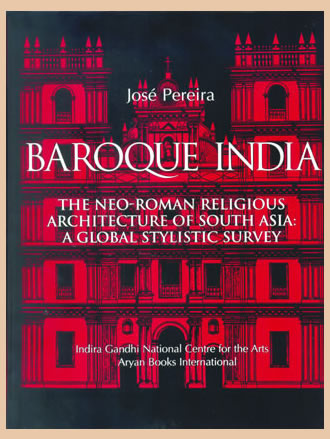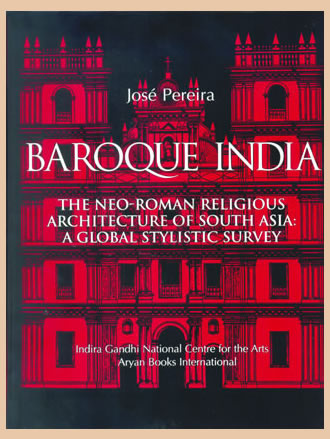BAROQUE INDIA : The Neo-Roman Religious Architecture of South Asia: A Global stylisc Survey
BAROQUE INDIA : The Neo-Roman Religious Architecture of South Asia: A Global stylisc Survey is backordered and will ship as soon as it is back in stock.
Couldn't load pickup availability
Genuine Products Guarantee
Genuine Products Guarantee
We guarantee 100% genuine products, and if proven otherwise, we will compensate you with 10 times the product's cost.
Delivery and Shipping
Delivery and Shipping
Products are generally ready for dispatch within 1 day and typically reach you in 3 to 5 days.
- Pages: xx + 498
- Format: HB
- ISBN: 9788173051616
- Edition: 1st
- Publisher: ARYAN BOOKS INTERNATIONAL
- Size: 22 cm × 28 cm
- Product Year: 2000
Baroque India is the fruit of over 40 years of research, and is the work of one professionally trained in the history of Indian art (Hindu, Buddhist and Jain). In addition, he is the author of a survey of Islamic architecture world-wide, which includes, of course, the Indo-Islamic traditions. It is his belief that Indian Baroque - or, more correctly, Indian Neo?Roman - cannot be properly appreciated without an understanding of the architectural styles that preceded it on the subcontinent, and which exercised a significant impact on it. To produce the book the author not only visited the various sites which contain the monuments of Indian Neo-Roman, but has travelled as an architectural pilgrim over much of the Neo-Roman world, in Europe and the Americas. He has also familiarized himself with the art-historical theories on the various styles of architecture, in particular, the Neo-Roman. He has thus prepared himself to contemplate Baroque India's contribution against the Neo-Roman background. In consequence, the method adopted in this book has been that of summarily describing the distinctive spatial modalities of the various Neo-Roman styles, as reflected in their major monuments, especially the styles which impacted on India: a method that facilitates the discernment of the specific Indian contribution to Neo-Roman taken as a whole. In so doing, the author has tried to outline a consistent aesthetic theory of Neo-Roman, to portray its five major modes - Renaissance, Mannerism, Baroque, Rococo and Neoclassicism - as expressions of the Neo-Roman essence, immanently developing, in the indicated sequence, one from the other, and pullulating a rich variety of spatial themes that both display a marked originality and manifest a capacity for assimilating the spatial nuances of the other architectural styles. This theory, he believes, has enabled him to distinguish the originality of Indian Neo?-Roman, and describe what it has absorbed from the subcontinent's Indian and Indo?Islamic styles, while integrating the absorbed material into its Neo-Roman substance.





